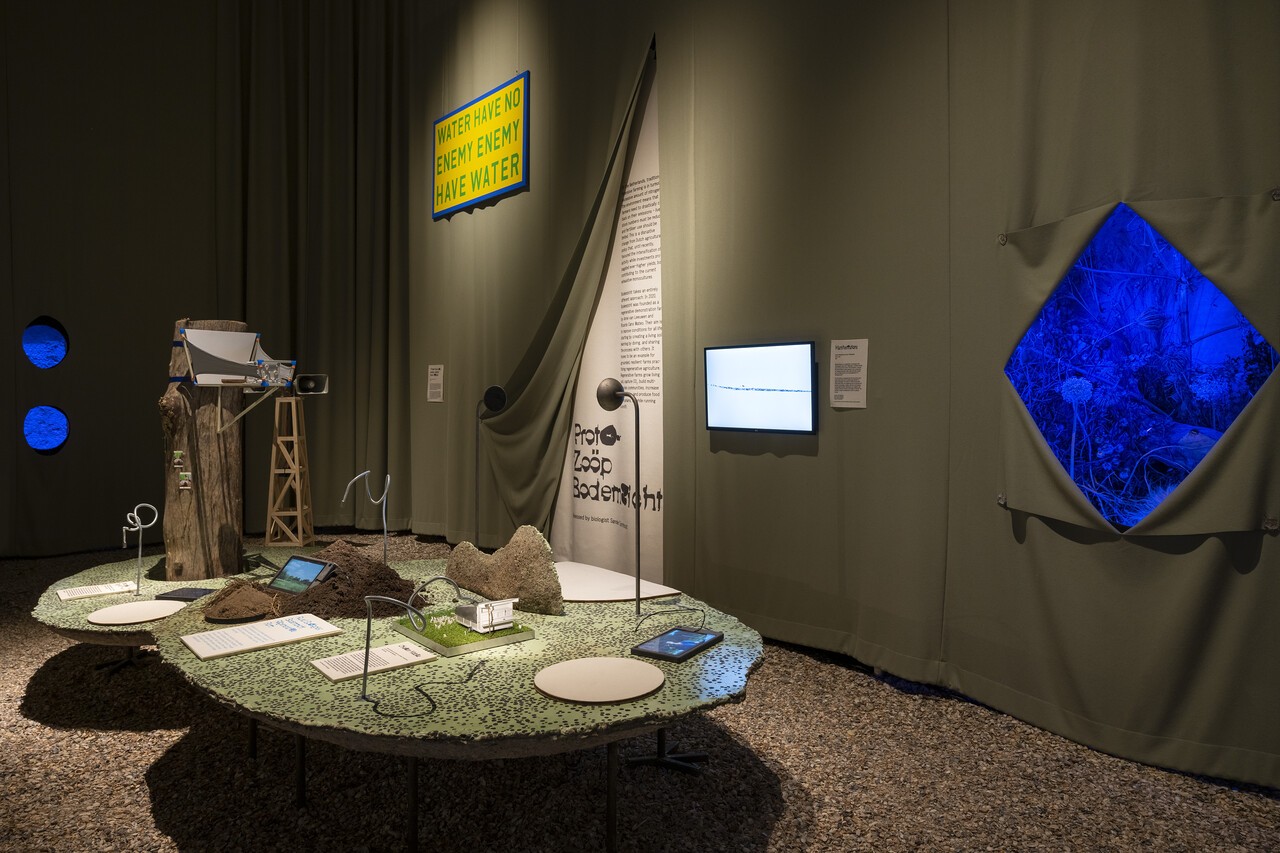Have we met?
The 23rd Triennale Milano International Exhibition is now open to the public, with the Dutch pavilion’s Have we met? promoting new ways for understanding our planet as a shared space for plants, microbes, humans and other animals. The view that the earth exists solely for human exploitation must be radically rethought to confront today’s environmental crises. Have we met? therefore examines what attitudes, tools and technologies are necessary to recalibrate the relationship between humans and non-humans.
An urban area in Rotterdam, a regenerative farm in the Netherlands’ rural east, and an abandoned North Sea oil rig: these three ecologically diverse sites help to explore the possibilities for interspecies relationships. While nature studies traditionally rely on quantitative data, human experience is usually assessed by qualitative means; could these be combined to give better insights into how humans and non-humans can learn to cooperate?
Have we met? explores a range of possible collaborative tools developed by practitioners across art, design, agriculture, and data- and marine sciences. Works include Chicken Mobile, designed by Harald den Breejen and Sjoerd van Leeuwen for regenerative farm Bodemzicht. The mobile offers a simple solution for regenerating compacted and degraded soil by recalibrating the natural rhythms between grass and grazing animals. Also on show is Borgþór, a documentary by Brynjar Sigurðarson and Sebastian Ziegler following a hermit who spends the winter looking for a bull fish in the remote Icelandic countryside. The hermit patiently investigates what might interest the fish in an attempt to find a common ground.
With contributions from Harald den Breejen and Sjoerd van Leeuwen (in collaboration with regenerative farm Bodemzicht); Dear Hunter; Embassy of the North Sea in collaboration with Darko Lagunas; Joost Emmerik; Christine Hvidt, Philipp Groubnov, Andrzej Konieczny, Alexander Köppel, Leon Lapa Pereira and Vivien Vuong (ArtScience Interfaculty students at the University of the Arts The Hague in collaboration with Rodrigo Delso and Eric Kluitenberg); Keer Hu, Yuzhi Liu and Jiafeng Zhu; Ian Ingram and Theun Karelse, Gisto; Takuma Kikuchi, Lucy Li, Florian Sapp and Alan Schiegl; Fiona Middleton; Ania Molenda; Studio Brynjar and Veronika; Togar; Sander Turnhout; Leena Valkeapää and Oula A Valkeapää.
Studio Ossidiana has designed the exhibition as a collective body that doubles as an observatory, combining human, animal, botanical and mineral components. Visitors are welcome in the belly of this living being that temporarily inhabits the Triennale site.
